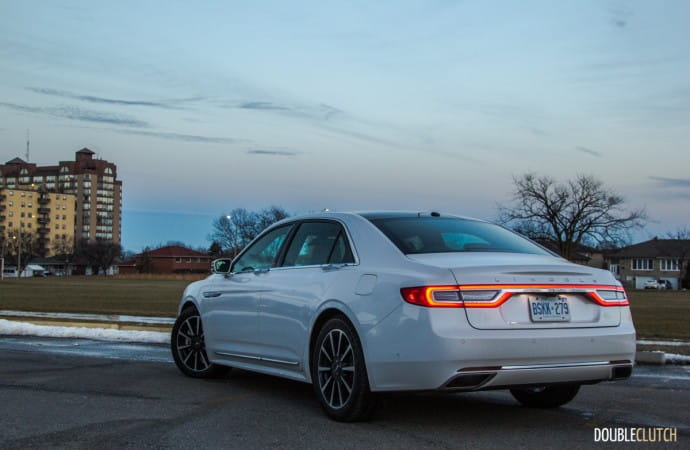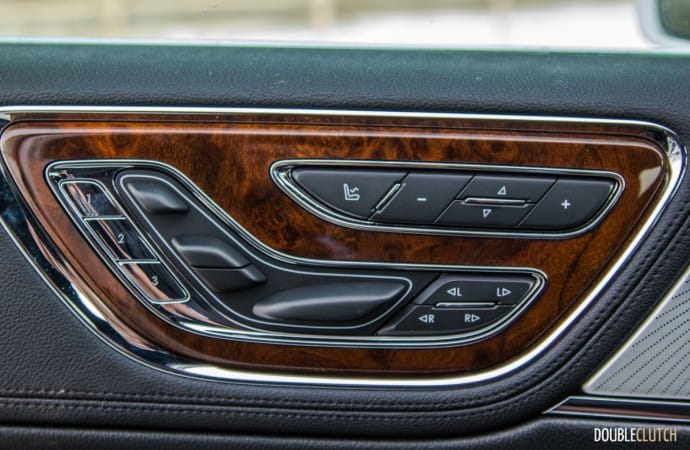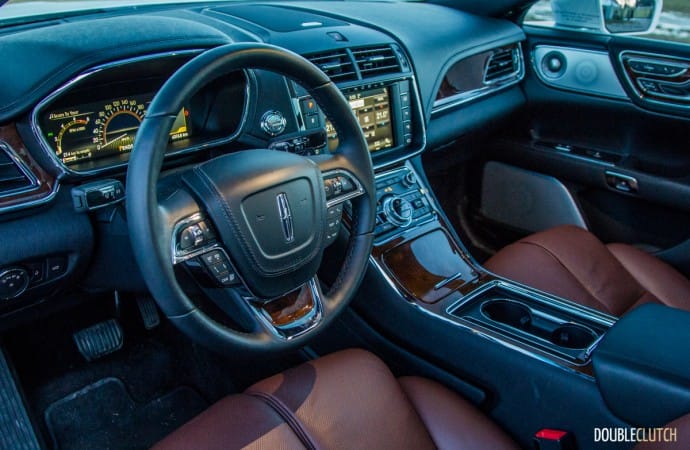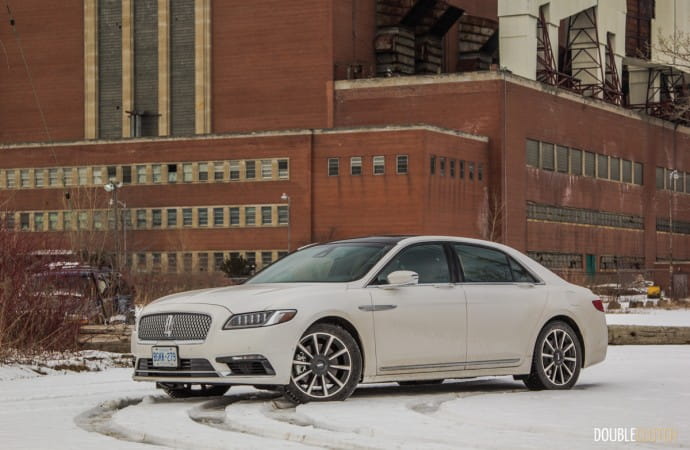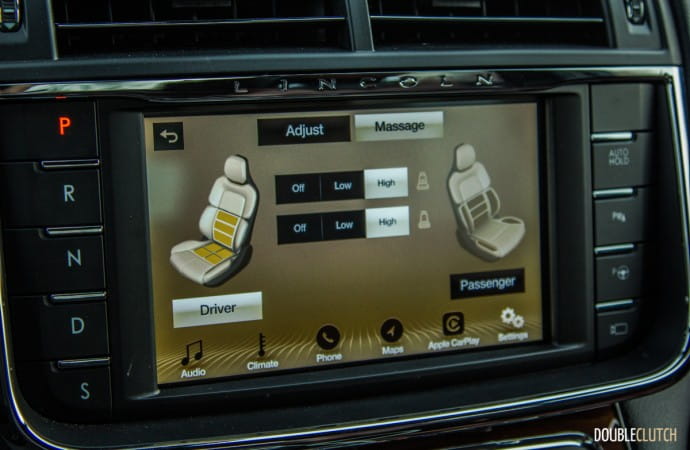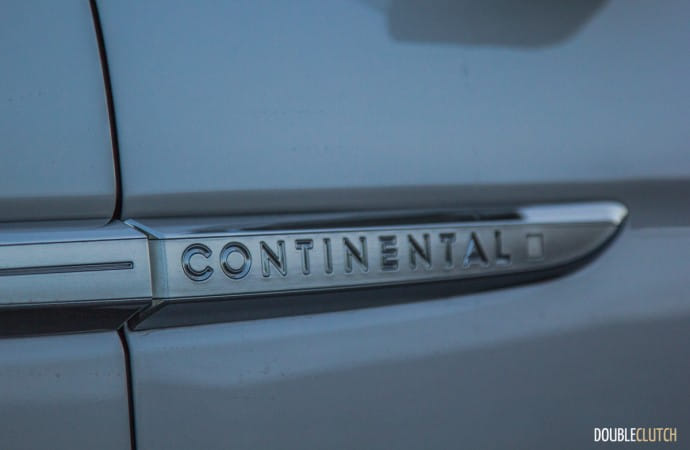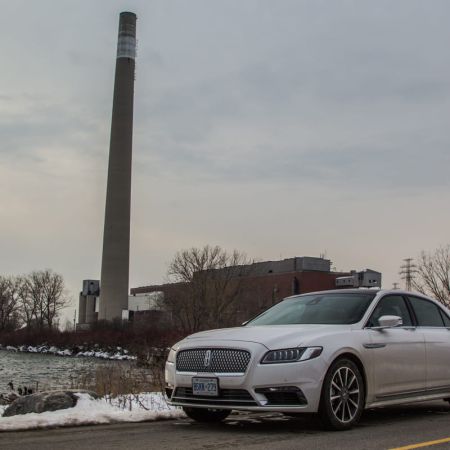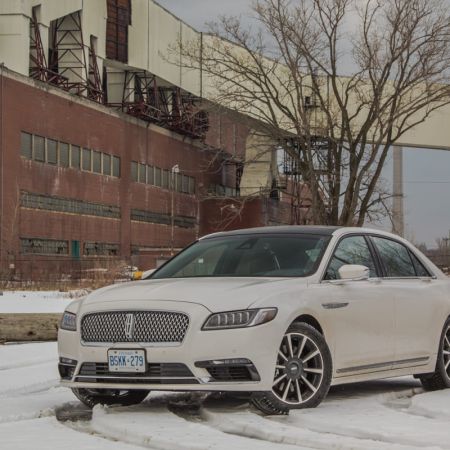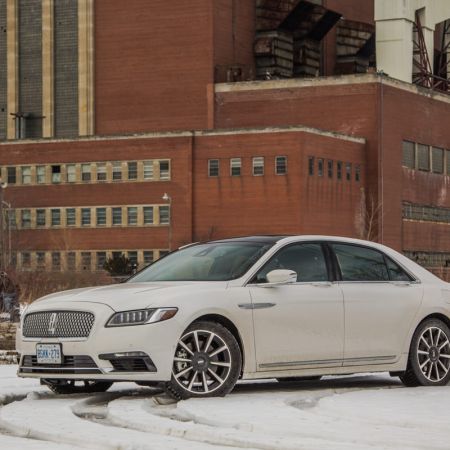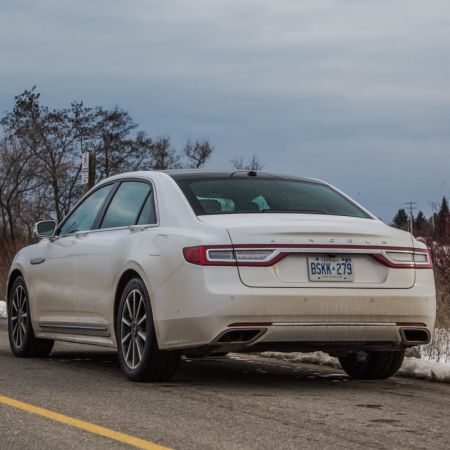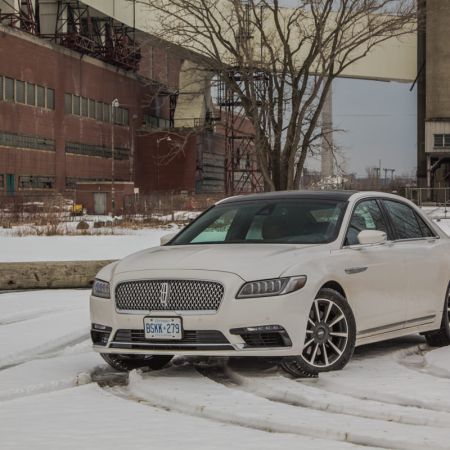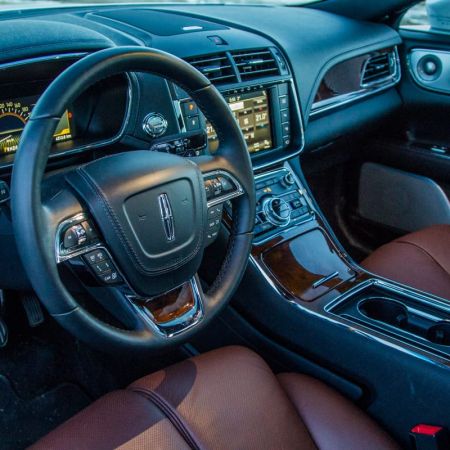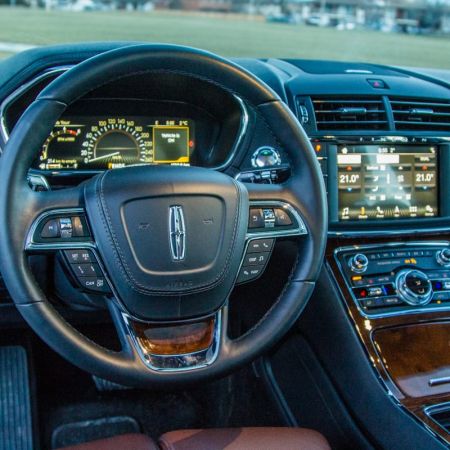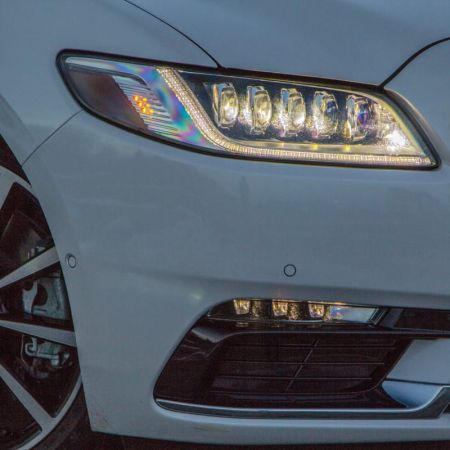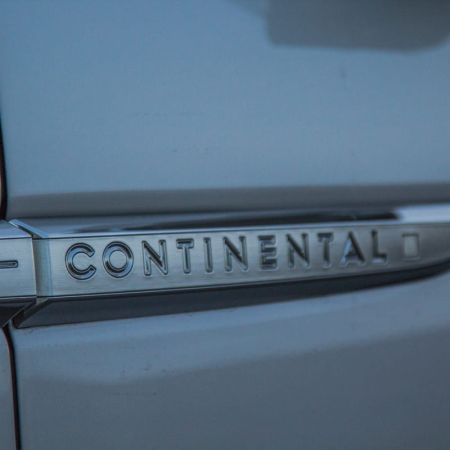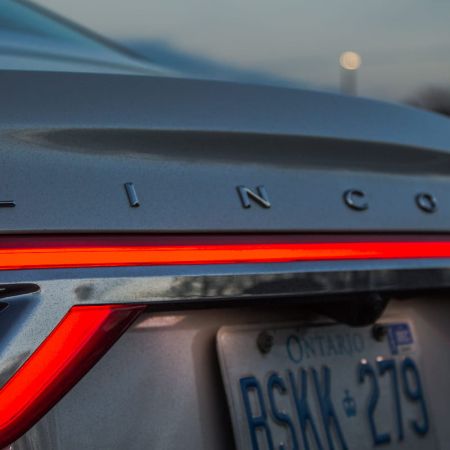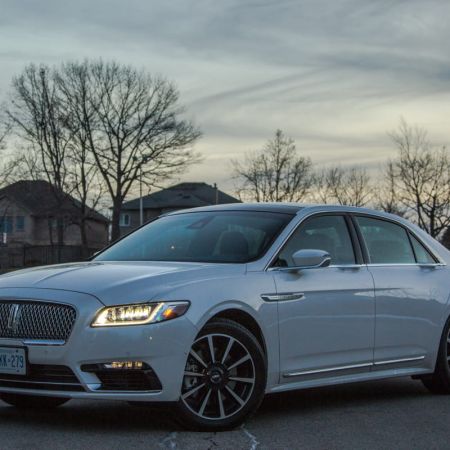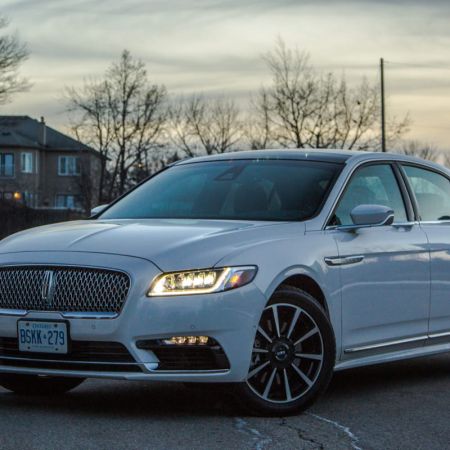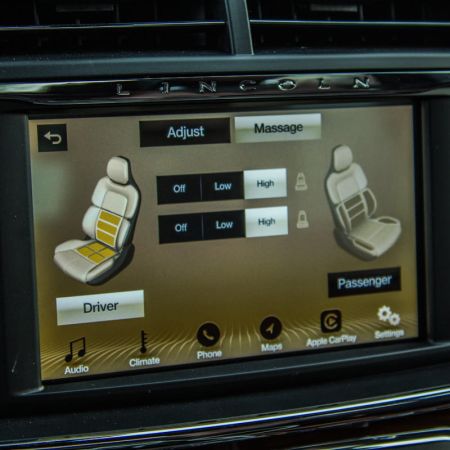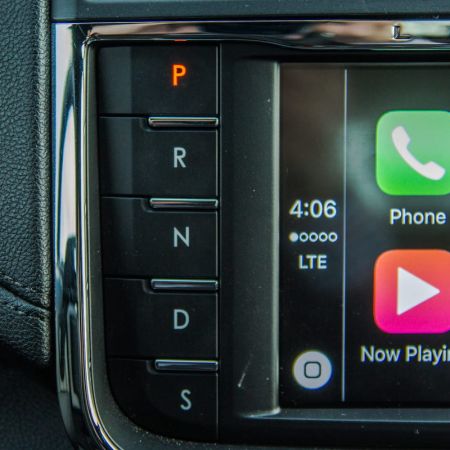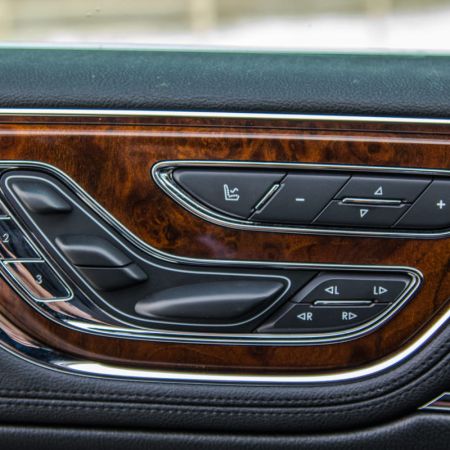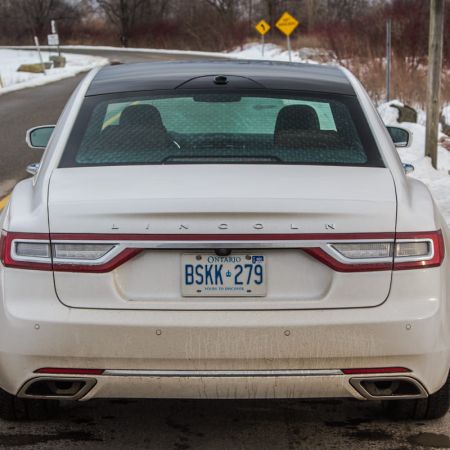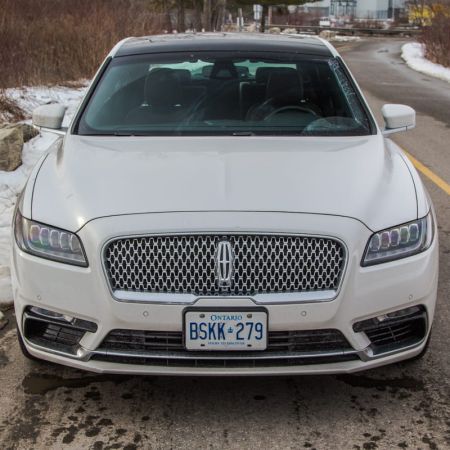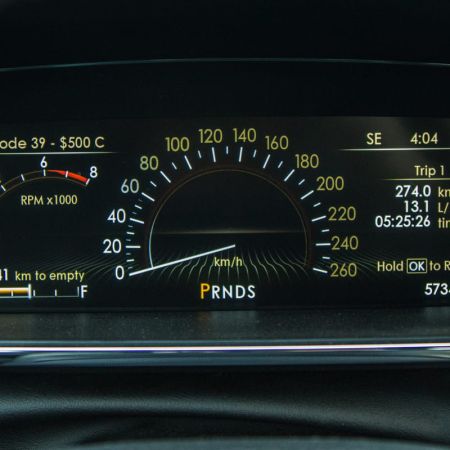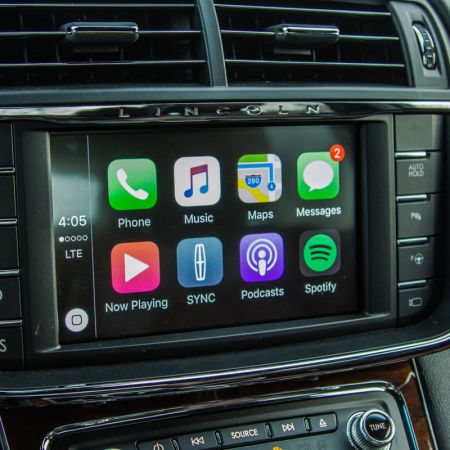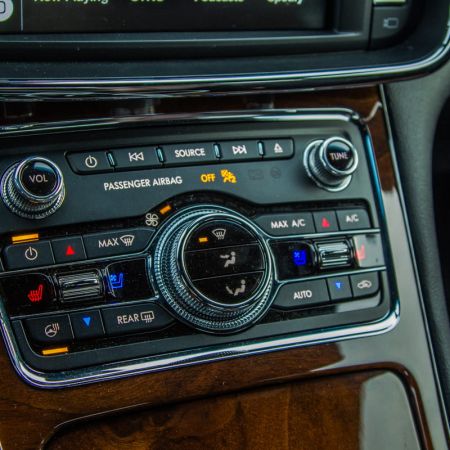Lincoln is going through a brand revival right now, with new products designed with passion and actual enthusiasm. The new brand flagship is this 2017 Lincoln Continental Reserve, which comes packing a sticker around $80,000 as tested and excellent proportions. We conducted a first drive of the Continental in California late last year, but a car this important was deemed worthy of an instrumented weeklong test on our home turf.
Painted in a White Platinum Tri-coat, our Continental was dressed to impress. This car is everything Lincoln has to offer, and is a real looker at first sight. The white paint is perfectly complemented by classy chrome touches, and it all fits together with the 20” wheels. The LED lighting is accented with animations when locking/unlocking the car, and there’s a Lincoln “welcome” projection onto the ground beside the doors. The proportions are perfect and the car looks more grown-up than its sibling, the MKZ (reviewed here). The muscular front fenders have “CONTINENTAL” embossed into polished metal pieces.
The interior of the Continental is presidential-grade, with 30-way “Perfect Position” adjustable power seats and a massage feature on all four outboard positions. It’s a supremely comfortable place to be, though some parts of the seats are a bit too much. For instance, adjustable thigh support is pretty much an industry-standard for luxury sedans, but the Continental offers separate adjustments for your left and right thighs. Additionally, the backrest has two controls for your upper and lower back. It’s a cool trick overall, but the result is that it takes far too long to get to your perfect driving position.
It’s all electronic inside the newest Lincoln too, including push-button door opening. The exterior door handles were dazzling at the car’s debut, protruding from the chrome trim at the bottom of the windows, and are a delight to use. They’re at the perfect height for most arms, and function flawlessly, too. The issue with these handles lies inside the car; precisely none of our passengers throughout the week were able to easily figure out how to let themselves out, as the buttons are difficult to find at first glance. By the end of the test week, they began to become a bit more natural to me, but it’s still not ideal.
One of the biggest conversation points with the new entries in this segment is the audio system. Cadillac has made it a point to promote the CT6’s Bose Panaray system at length, though we think Lincoln has done it just a little bit better. The top-trim Continental has a 19-speaker Revel Ultima system, with beautiful precision-milled silver speaker covers on the doors. Audio quality is breathtaking, bested only by Volvo’s Bowers & Wilkins setup. We found the Lincoln able to perfectly reproduce literally any genre of music we threw at it.
Infotainment within the Continental is via Lincoln’s version of Ford SYNC 3 (reviewed here). This is one of the best mainstream systems out there, though in the luxury segment, it competes with the likes of BMW’s iDrive, Audi’s MMI with Virtual Cockpit, and Cadillac’s latest iteration of CUE. It’s still competitive, responsive, and virtually lag-free, offering the latest Apple CarPlay and Android Auto technology. Ford has announced a partnership with Amazon, meaning forthcoming models will be compatible with Alexa, their digital assistant.
Powering the top-trim Continental Reserve is Lincoln’s new twin-turbocharged 3.0L V6. It pushes out 400 horsepower at 5,750RPM and 400 lb-ft of torque at 2,750RPM. The powerplant is likely the best part of the car, and this car answers for itself when asked “why doesn’t the flagship have a V8?” It’s creamy smooth, has excellent power delivery, and simply flies to highway speeds effortlessly. This motor feels infinitely better than any of the Ford EcoBoost motors, and is right up there with GM’s 3.0L twin-turbo V6 in their flagship CT6 (reviewed here).
Perhaps the only downfall of the motor is the six-speed automatic transmission, which is a significant overlook on Lincoln’s behalf. With a new ten-speed now making its debut in the F-150 (reviewed here) and the forthcoming Expedition, it’s only a matter of time before it’s dropped into the Continental as well. The six-speed unit is archaic and geared a bit too short for this car. When driving spiritedly, shifts arrive on demand and responsively, but with the rest of the industry using seven, eight, and nine-speed units, this one lags behind pretty significantly.
Ride quality is also worthy of being Lincoln’s flagship, with the suspension doing a good job absorbing all of the potholes Toronto has to offer. Out on the highway, the Continental’s active noise cancellation and dual-pane glass work in harmony to minimize exterior sounds from making their way into the cabin. The result is an impeccably quiet car with a soft, supple ride. This is the car worthy of the Lincoln badge; it doesn’t feel at all like a re-badged Ford.
Lincoln’s variable ratio steering means at parking lot speeds, maneuvering the large sedan is child’s play. It also incorporates parallel and perpendicular park assist, which we found to work exceptionally well, even taking into consideration the large concrete pillars in underground garages. The Continental was able to locate a spot and cleanly reverse itself into it at the touch of a button. Out on the road, the steering is responsive and the car handles amicably; it’s even ready to dance should there be some deep snow on the ground, thanks to all-wheel-drive. We did find the turning radius to be quite wide, requiring a bit of overcorrection if you’re not used to the car.
Visibility out of the Lincoln is pretty good, with large windows despite the relatively high beltline. The exterior mirrors are surprisingly small considering the size of the car, but once adjusted properly, the sightlines overall are more than adequate. The rear window has a powered shade, and the side windows have manual shades, for privacy when needed. It would have been nice to see the inclusion of powered shades for the side windows like the BMW 7-series (reviewed here), as they can’t be moved from the driver’s seat if passengers have forgotten them in place.
Fuel ratings for this engine are 14.4L/100km city, 9.7L/100km highway, and a combined rating of 12.3L/100km when operating on 91-octane premium fuel. Our week with the Continental coincided with the Canadian International Auto Show’s media day and affiliated conferences/receptions, so we had a ton of driving to do. While the Conti is an excellent car to just relax and soak up the kilometers, we couldn’t manage any better than 13.9L/100km. We observed that this is the only car in its segment that doesn’t offer an idle start/stop system for fuel savings. It’s undeniable that many Continentals will end up as livery and limousine fleet vehicles, so this slight addition would save quite a bit in the long run.
The Continental starts at $56,900, and comes with all-wheel-drive as standard equipment in Canada. It also comes with leather seating surfaces, a power trunklid, and voice-activated navigation on all trim levels. The key difference is that the base car comes with the 2.7L EcoBoost engine rather than the 3.0L, which requires a step up to the Reserve, for $63,400. Adding options such as the Premium Package, Luxury Package, Rear Seat Package, LED headlights and twin-panel panoramic sunroof bring the sticker for the Reserve AWD to $80,000.
There are a few very viable large sedans in the Continental’s price range, namely the award-winning Volvo S90 (reviewed here), the new Genesis G90, and Cadillac’s CT6 (reviewed here). While all of these cars are brand new for 2017 and offer a ton of content and technology for their dollar, there are some significant differences. For instance, the Volvo is the best overall package, but is a good bit smaller than the other cars. The Continental has a ton of rear seat room and usable cargo space in the trunk, which will be highly beneficial for livery use.
We are confident that the 2017 Lincoln Continental Reserve will sell decently well in Canada. Loyal Lincoln buyers have been isolated over the past few years as the brand lost a little bit of its identity and as such, a bit of its reputation. Despite having its limitations and shortcomings, this is a car that brings back some of the panache that helped Lincoln stand out. It’s large, comfortable, has looks that garner attention, and is a status symbol – this is what Lincoln buyers want, and the brand is back to delivering just that.

